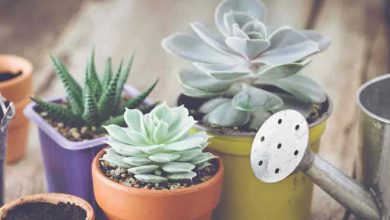Planting an Orange Tree: [Forms, Care, Substrate, Irrigation and Pests]

if you are looking forplant an orange tree,You will have to first consult all the data that encompasses this matter. In this guide we are going to try to answer the most important questions about this famous citrus fruit.
Since the orange is a delicious fruit, it is increasingly being planted and marketed around the world. Also, it is an evergreen tree.
Will you join us to learn everything about orange tree planting?
You may also be interested in:
- Planting the Lemon Tree, Complete Guide.
- The pruning of the orange tree.
- The fertilizer of the orange tree.

Important points when planting an orange tree
- When? Preferably during the spring. We need enough moisture, but without frost.
- Where? Use soils that have a pH around 6 to 6.5.
- How to prepare the land? Usehomemade organic matter such as homemade compost to provide good nutrients. Also check the acidity of the soil.
- How often do we water? It will depend on how hot it is. The orange tree is sensitive to drought, so it is advisable to water every two days if temperatures are very high.
- How should we water? Ideally, use drip irrigation. It is the one that has given us the best result.
- What favorable associations does it have? Trees such as mango, guava and papaya. Also lettuce, arugula and escarole.
- What pests and diseases does it have? Anthracnose, gummosis, red lice, citrus miners and aphids.
When to plant an orange tree?
 An orange tree should be planted in times when the rains are sufficient to provide a humid environment for the seeds.
An orange tree should be planted in times when the rains are sufficient to provide a humid environment for the seeds.
This is preferably in the spring.
These plants do not have hot temperatures, so they are usually recommended for areas that are below 32º C.
However, there have been cases where orange trees survive high temperatures with frequent and abundant watering.
Where to plant an orange tree?
To plant orange trees, it is best to use soils that have a pH that is around 6 to 6.5.
It is also important that the soil is sandy or clayey to allow the roots to move easily.
Although this is optimal, the truth is that the orange tree is quite resistant, which is why it has withstood growing in soils that do not meet these requirements.
It is also important to consider that it can be protected from gusts of wind, especially when it comes to young plants.
However, it should be allowed to receive sufficient sunlight for several hours of the day.
How to prepare the land for growing orange trees?
 In order for the land to enjoy the conditions seen in the previous point, it is necessary to fertilize it.
In order for the land to enjoy the conditions seen in the previous point, it is necessary to fertilize it.
The use of homemade compost is one of the most common ways to obtain good nutrients without having to spend money on it.
Another good tip is to check the acidity of the soil to verify that it is in the range of 6 to 6.5.
If it is more acidic, the most appropriate thing is to place a mixture of calcium and magnesium carbonate to help it become more calcareous.
How do we water orange trees?
To water an orange tree , consider that the soil is dry before moistening it again.
The usual thing is that this period takes place once or twice a week.
However, this will vary depending on factors such as the heat or humidity that the environment has at each moment.
When it is the rainy season, it is logical that the irrigation period is reduced, the opposite happens in the summer months with radiant sun.
 On the days when it is time to apply the irrigation, it will be necessary to do it abundantly, so that the soil is well moistened.
On the days when it is time to apply the irrigation, it will be necessary to do it abundantly, so that the soil is well moistened.
However, it is necessary to prevent it from being filled with puddles in excess to avoid rotting or accumulation of harmful microorganisms.
How do we plant an orange tree step by step?
Two ways can be used to sow the orange tree: seeds or grafts.
In the case of seeds, the growth and maturation process of the plant is usually much slower.
This modality would lead to seeing the production results up to a decade after sowing.
In addition to that, these plants, as they sprout, have to face many types of inconveniences with their little energy.
These drawbacks include bacteria, fungi, rot, the inability of the roots to attach to the ground, etc.
Reproduction by cuttings or grafts: Very interesting option
On the other hand, with grafts the situation is usually totally different because the plant already has the resistance to face the outside world.
The grafts can be made inside the house or bought in a nursery, depending on the possibilities of each person.
After having it in your hands, the procedure to follow will be as follows:
- Carry out a review of all the roots of the plant in order to discard those parts that are in poor condition.
- Eliminate excess air between the roots and the soil that remains stuck to them by pressing lightly with your fingers.
- Dig a hole in a clear space so that the roots can expand without complications.
- It is important that the hole is deep only to cover the roots, without exaggerating or reaching the trunk because it can cause the death of the plant.
- Gently press down on the soil to fix it to the roots.
- If the soil is dry at this point , water abundantly but without creating puddles.
By following these instructions precisely, the orange trees will properly attach themselves to the soil and continue to grow. To learn more, you can see: Orange tree cuttings.
Prune the orange tree: When and how to do it?
To prune the orange tree, it is best to avoid very cold times and also times of flowering. This is usually in early Spring or late Summer.
On the other hand, it is important to get hold of good pruning shears. In case the branches are large, a saw is better.
We must eliminate those superfluous branches or suckers that protrude from the trunk.
To know more: All about the pruning of the orange tree.
What favorable associations does it have?
 As the orange tree is a fruit tree that needs a good amount of moisture in the soil, it can be associated with other plants with similar characteristics.
As the orange tree is a fruit tree that needs a good amount of moisture in the soil, it can be associated with other plants with similar characteristics.
At the level of other fruit trees, they can be kept in the same area with mango, guava and papaya trees.
In the field of vegetables, it could have a good experience when planted together with lettuce, arugula and escarole.
In any case, the important thing is that the plants do not take away nutrients from each other, but that they can enjoy a friendly coexistence.
What pests and diseases does it have?
Although it is a resistant tree, it could be attacked by some diseases such as anthracnose or pests such as the California red louse.
orange tree diseases
Among the main diseases that affect you are:
- Anthracnose: produces spots on leaves, flowers and fruits, making it appear that the latter are rotten.
- Gummosis: the plant presents a secretion in the form of whitish rubber that covers it from the base to the upper parts.
orange tree pests
In the case of pests we have some such as:
- The California red louse: has a preference for the fruits, causing yellow spots and causing them to fall prematurely.
- Aphids: they extract the sap from the plant, reducing its strength and causing the leaves to curl.
To plant orange trees you do not need to have many years of experience because different people have achieved good results in their home gardens. What is essential is to follow the correct process from day one. If you want to go deeper, you can see: Diseases of the orange tree.
How long does the orange tree live?
The average lifespan of an orange tree is 50 years.
How long does it take to grow the orange tree?
The orange tree takes up to 7 years to develop its entire structure, the age at which it begins to emerge from its youth and is considered an adult tree.
How long does it take to produce fruit?
It is a fast-producing tree and just in the 3rd year it will be able to start producing.
Can it be grown in a pot?
The orange tree accepts planting in a pot without complications and will be equally productive as if it were in the garden, although not in the same quantity.
How many times does the orange tree produce fruit?
When conditions are favourable, it can give two to three harvests per year.
In addition, the orange tree is usually very productive during its first 30 years of life, only to later suffer a decrease in the number of fruits per year.
Should the orange tree be pollinated to obtain fruit?
The main pollination system of the orange tree is bees and other pollinating insects.
However, the wind also contributes although to a lesser extent.
How cold can the orange tree tolerate?
Orange trees are not very resistant to planting in cold climates. It is recommended that winters not drop below -3°C as they could die.
How many orange trees can be planted per hectare?
The orange tree plantation admits about 400 specimens per hectare to enjoy 40 tons of fruit.
What type of fertilizer does the orange tree need?
The orange tree has requirements of the three main macronutrients: phosphorus, potassium and nitrogen, with which it will obtain enough to be healthy and productive.
How much heat and/or drought can the orange tree tolerate?
Orange trees are comfortable in warm climates, without exaggerations or sudden changes in temperature. They could withstand an average of 30 to 35 ° C without problems.
They don’t do well in drought. However, work is already being done on new varieties capable of withstanding little water availability.
To learn more, read: Orange varieties.
Bibliography and references
-
[PDF] Structure of the bird community of a fruit monoculture (orange tree) and its conservation value for the avifauna: a comparative study with a crop …, C Verea, MA Araujo, L Parra… – Memory of the Foundation…, 2009 – academia.edu
-
[BOOK] Cultivation and exploitation of the orange tree, F Atristain – 1894 – books.google.com
-
[BOOK] Organic waste in strawberry and orange crops: agronomic and environmental assessment, MPB Domenech – 2001 – dialnet.unirioja.es
-
Calculation of the profitability of fruit plantations. Application to orange tree cultivation, JLM Lasheras – Journal of Agricultural Studies, 1970 – dialnet.unirioja.es
-
Soil selection for orange tree cultivation , S Sanchez, L Bascones, A Rosales – Fonaiap Divulga (Venezuela).(Jul …, 1985 – sidalc.net
-
Evaluation of land for the cultivation of orange trees. I. Main edaphic characteristics that determine the suitability of soils for orange trees, A Sánchez, L Bascones, A Rosales – Tropical Agronomy (Venezuela)…, 1988 – sidalc.net
-
[PDF] Feasibility of the use of calcium sulfate as a source for the application of calcium in lemon and orange trees, AP Pastor… – Revista de…, 2015 – sulfatecalcicodelmediterraneo.es
-
[PDF] Ecological bases for the introduction of orange tree cultivation (citrus sinensis) in the municipality. de Cocula Jal, NN Alberto – 1981 – repository.cucba.udg.mx
-
Mycorrhizae occurs in tree crops: almond, orange and olive trees, BR Fajardo – 1986 – dialnet.unirioja.es
-
Soil-plant relationships in orange plantations in the lacustrine plain of the Valencia Lake Basin. C Arvelo de Valls, E Casanova Olivo – Tropical Agronomy (Venezuela).(, 1986 – sidalc.net
- Wikipedia: Citrus × sinensis
-
The cultivation of citrus fruits, El González-Sicilia – 1968 – sidalc.net
- Wikipedia: Oranges




![Photo of Climate of Europe: [Characteristics, Flora, Fauna and Adaptability]](https://www.complete-gardening.com/wp-content/uploads/2022/08/climate-of-europe-characteristics-flora-fauna-and-adaptability-390x220.png)